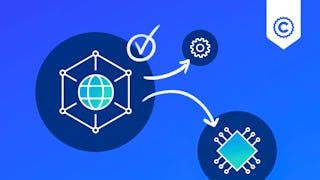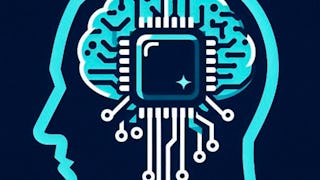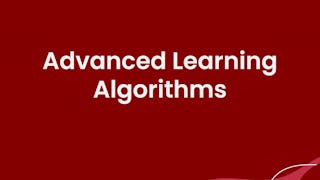In a world where data-driven solutions are revolutionizing industries, mastering advanced machine learning techniques is a pivotal skill that empowers innovation and strategic decision-making. This equips you with the expertise needed to harness advanced machine-learning algorithms. You will delve into the intricacies of cutting-edge machine-learning algorithms. Complex concepts will be simplified, making them accessible and actionable for you to harness the potential of advanced algorithms effectively. By the end of this course, you will learn to:

Enjoy unlimited growth with a year of Coursera Plus for $199 (regularly $399). Save now.

Advanced Machine Learning Algorithms
This course is part of Fractal Data Science Professional Certificate

Instructor: Analytics Vidhya
2,176 already enrolled
Included with
(11 reviews)
Recommended experience
What you'll learn
Employ regularization techniques for enhanced model performance and robustness.
Leverage ensemble methods, such as bagging and boosting, to improve predictive accuracy.
Implement hyperparameter tuning and feature engineering to refine models for real-world challenges.
Combine diverse models for superior predictions, expanding your predictive toolkit.
Skills you'll gain
Details to know

Add to your LinkedIn profile
8 assignments
See how employees at top companies are mastering in-demand skills

Build your Data Analysis expertise
- Learn new concepts from industry experts
- Gain a foundational understanding of a subject or tool
- Develop job-relevant skills with hands-on projects
- Earn a shareable career certificate from Fractal Analytics

There are 6 modules in this course
In the fast-evolving field of machine learning, overfitting and underfitting are persistent challenges that can hinder the performance of models. The Regularization module delves deep into the techniques that address these challenges head-on. Over a span of 2 hours, learners will develop a profound understanding of how regularization techniques can enhance model generalization and robustness.
What's included
12 videos2 readings2 assignments1 programming assignment
In this module, learners will explore Bagging Algorithms, which are techniques that group models together for more accurate predictions. Learners will start by learning the basics of Bagging and why it's better. They will discover how these algorithms work and why bootstrapping is a powerful idea. Next, they will dive deeper into types of Bagging Algorithms. They will explore Random Forests, Extra Trees, and how to use Bagging with classifiers.
What's included
6 videos2 readings1 assignment1 programming assignment
In this module, learners will grasp the essence of boosting techniques and their transformative impact on model accuracy. The focus then shifts to AdaBoost, with an exploration of its underlying algorithm and the pivotal role it plays in boosting's iterative approach. Then, they will learn about Gradient Boosting Machines (GBM). The final lesson introduces learners to advanced boosting algorithm variants: XGBoost, LightGBM, and CatBoost.
What's included
6 videos1 reading1 assignment1 programming assignment
What's included
10 videos1 reading2 assignments1 programming assignment
This module, dedicated to 'Combining Models,' offers learners a concise yet insightful exploration into the realm of leveraging multiple models for superior performance. Learners will explore why mixing models is a great idea. They will delve into fundamental concepts of stacking, blending, and aggregation.
What's included
5 videos1 reading1 assignment1 programming assignment
In this module, learners will dive into the important process of picking the right machine learning model for the job. The module begins by showing why choosing the right model matters. Learners will get to know about the factors they need to consider while choosing the model. They will get a handy guide that will help them in selecting the right model. They will learn about the essential things they need to look at while selecting a model, including performance metrics.
What's included
2 videos1 assignment
Earn a career certificate
Add this credential to your LinkedIn profile, resume, or CV. Share it on social media and in your performance review.
Instructor

Offered by
Explore more from Data Analysis
 Status: Free Trial
Status: Free Trial Status: Free Trial
Status: Free TrialJohns Hopkins University
 Status: Free Trial
Status: Free Trial Status: Free Trial
Status: Free TrialDeepLearning.AI
Why people choose Coursera for their career




Learner reviews
11 reviews
- 5 stars
63.63%
- 4 stars
0%
- 3 stars
0%
- 2 stars
9.09%
- 1 star
27.27%
Showing 3 of 11
Reviewed on Jul 6, 2024
Very nice material with good explanation for each module
Frequently asked questions
To access the course materials, assignments and to earn a Certificate, you will need to purchase the Certificate experience when you enroll in a course. You can try a Free Trial instead, or apply for Financial Aid. The course may offer 'Full Course, No Certificate' instead. This option lets you see all course materials, submit required assessments, and get a final grade. This also means that you will not be able to purchase a Certificate experience.
When you enroll in the course, you get access to all of the courses in the Certificate, and you earn a certificate when you complete the work. Your electronic Certificate will be added to your Accomplishments page - from there, you can print your Certificate or add it to your LinkedIn profile.
More questions
Financial aid available,





